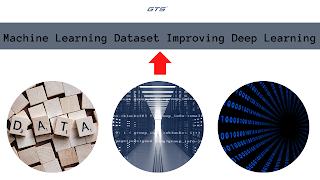How Machine Learning Dataset Can Improve The Deep Learning Process?
Machine learning and deep learning models will use in modern-day workplaces. Since new algorithms are developing rapidly, computing power gets cheaper, and data is made more accessible. The quantity of AI applications is increasing dramatically. From healthcare and finance to manufacturing to education construction, as well as other industries, every sector has applications for deep learning and machine learning.
In all of these ML and DL projects across various industries, improving the model is among the most significant issues. Therefore, in this article, we will.
The identified method ensures the success of implementing ML and DL applications in the business. But, there are best practices that could lower the risk of failing an AI implementation.
The accuracy and performance of models are critical factors in determining success. For many deep and machine-learning applications, deployment is only practical if the model is accurate enough to meet the particular application's requirements. The performance of the model is primarily an issue of technical nature.
Preliminary Analysis:
Examining the model's fundamental hypotheses in its context is the initial step to improving machine learning algorithms. Then followed by assessing the efficiency of the model currently in use.
First step: Reread the initial hypothesis about the data and the selection of algorithms:
Before any machine learning modelling or algorithmic work is finished, one should thoroughly examine the current problem, and the use case should be defined. It should establish the technical and business metrics.
When the thrilling process of creating machine learning or deep learning models begins, it's common to overlook the established guidelines for AI Annotation Services, strategies to develop datasets measurements, and the success requirements. It is, however, beneficial to organize and prioritize the improvement process of deep learning and machine learning.
Step 2: Do you think the model is over fitting or under fitting?
By comparing the model's predictability error concerning the model's complexity and the number of epochs, the model has. The distinction between test and training error curves shows over fitting with high variance and poor bias. The other is under fitting which has a high tendency and low friction. It can use as an indicator of the state of the machine-learning model.
If the model isn't fitting correctly and not fitting properly, it is possible to improve it by:
- Utilizing more training data
- Reducing model complexity
- Regularization methods that include ridges and regularization using the lasso
- Dropout
- Early stopping
The model will become more complex; adding layers or features and training the model for more extended periods could solve the under fitting issue.
Step 3. What mistakes is the model committing:
Diagrams that display the proportion in Type 1 (false positive) and Type 2 (false negative) mistakes, like the Confusion Matrix, can be used to show this for the common classification task.
Model Optimization:
You must examine whether you can gain better performance from your current model by retraining it using another set of hyper parameters after performing an initial analysis, testing the accuracy of the model, and visualizing the key metrics to identify the flaws.
It believes that the current set of biases and model weights represent local minimums during the convex optimization process to construct an optimized machine learning or deep-learning model. A global minimum generated by gradient descent must ideally match the highest possible combination of weights for models.
The weights' initialization, the learning schedule, the number of training epochs, the regularization methods used to avoid over fitting, and many other parameters unique to the learning process and the model itself, each algorithm and intrinsic parameter utilized in a machine-learning and deep-learning models differs. Machine learning seeks to find the best way to collect data weights to approximate complex nonlinear processes. Finding the best range of hyper parameters can improve accuracy since the first model may not be optimal.
Tuning hyper parameters involves developing several models using different variations of the hyper parameter. For models that are smaller in size, it's usually a straight forward procedure that helps in determining the model that has the highest precision. Running multiple versions for the exact model using different combinations of hyper parameter values is not feasible for more complex models, like deep neural networks. In such cases, it is prudent to.
Models and Algorithms:
1. Establish a solid base model for a baseline: Establishing an established baseline model essential to improve any machine-learning model. A solid baseline model considers all commercial and technical needs, evaluates the models' deployment and data engineering pipelines, and serves as a reference point for developing other models.
2. Use pre-trained models and cloud API: In certain situations, it is possible to reduce time and energy by using pre-trained models instead of manually creating an initial model. Many resources are readily available, including, or APIs from cloud providers are there
3. Try Automatic ML: A handful of start-ups and businesses like H2O.ai offers autumn solutions. They also offer cloud-based services such as Google Cloud Platform [7]. The Autumn further training data for Image Annotation Companies is expandable to a larger scale by applying data augmentation methods. The nature of the data used will determine the extent to which can employ data augmentation techniques
Data:
1. Data Enhancement: An example, using a generative model or a probability distribution based on summary statistics is similar to the observed data that can use to create artificial time-series information. Can enhance images by altering the attributes of ideas such as brightness, color, hue or orientation, cropping, etc.
2. Feature Selection and engineering: Some related or redundant features that don't significantly enhance the performance of models can be eliminated by using programmed feature selection methods. The identification of robust features is made more accessible by techniques for creating and evaluating models repeatedly with increasing features or for iteratively eliminating only one characteristic at a given time in a model built with all elements.

Comments
Post a Comment